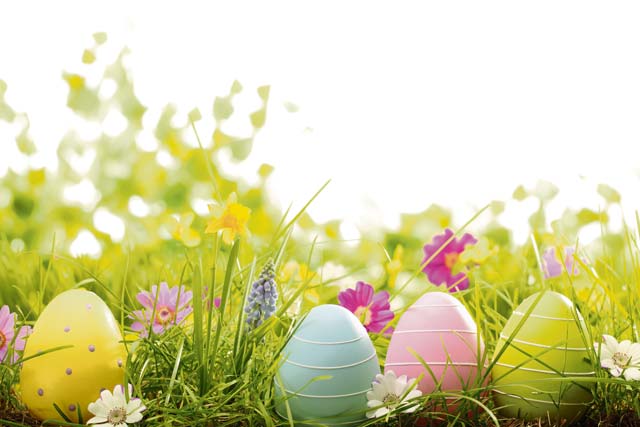
The Easter holidays are just around the corner. In Germany, Easter week begins with Holy Thursday, which Germans call “Gründonnerstag,” or green Thursday. The word “green” is not associated with the color, but rather with the old German verb “grienen,” meaning to bemoan. Some people still recognize Holy Thursday traditions by eating green vegetables that day, preferably spinach.
The following day, Good Friday, this year on April 3, is an official German holiday. For Protestants, it is one of the most important religious holidays, and for Roman Catholics, they strictly observe it as a day of fasting.
Germans celebrate Easter on two days: Easter Sunday and Easter Monday.
A few weeks before Easter, people put decorations inside and outside their homes. It is most common to hang up Easter eggs and other ornaments on branches from forsythia trees, willow catkins and other trees, which are put up in vases or grown in the backyard. In some towns and villages, Easter trees are put up outside of public places and fountains are decorated with eggs, flowers and garlands. Easter markets also sell food and crafts during this time and children can enjoy merry-go-rounds.
Easter Sunday usually starts with the hunt for Easter eggs and Easter baskets; this is the biggest joy for children who still believe the Easter bunny delivers eggs, chocolate and candy. Parents hide the Easter surprises in the most spectacular places such as the oven, washing machine, closets and, of course, in the garden. Another tradition is to take an Easter walk through the woods, where little ones may find some more eggs that the Easter bunny accidentally “lost.”
A popular meal served on Easter is roast lamb. According to Christians, the lamb is the symbol for the crucifixion and the sacrifice of Jesus Christ. The Easter lamb origin came from a 2,000-year-old Jewish custom, and in 1265, the lamb appeared as a pastry for the first time. Today, bakeries offer Easter lamb pastries as well as Easter leavened wreaths with a hard-boiled colored egg in the middle.
The Easter egg had its beginnings in the ancient past. Early philosophers gave special significance to the oval shape of elemental things, from the raindrop to the seed, and the oval Easter egg is an outgrowth of ancient Pagan rights associated with the rebirth of nature.
For the Egyptians, Greeks and Romans, the egg was a symbol of fertility and life. They put clay and marble eggs in graves to facilitate the dead passing into another world.
In China, 5,000 years ago, it was a tradition to give away decorated eggs for the beginning of spring. In Finland, people claim that the universe derived from one giant egg. In Persia, eggs were only combined with spring festivities because during the season of the new sun, poultry started laying eggs again.
It has not been explored why eggs play such a big role during the Easter holiday. One reason might be because of the strict prohibition by churches to eat eggs during Lent.
In former times, decorated eggs were given as gifts throughout the year. Later, it was only done on Easter. It was not only the Easter bunny giving away eggs. In mythology, storks, foxes and donkeys were the bearers as well. In 1682, the Easter bunny was mentioned for the first time. When the production of Easter chocolate and bunnies, as well as the printing of Easter picture books and postcards, began around 1850, the long-eared bunny became an Easter trademark.
In some towns, Easter markets are set up where vendors sell handcrafted decorations, candles, artificial flowers, stuffed animals and candy. The Easter market in Kaiserslautern takes place through April 4 around Stiftskirche. The Kaiserslauten Gartenschau will have a life-size Easter bunny passing out Easter treats to children from 1 to 3 p.m. April 5, and in Kaiserslautern-Siegelbach, the zoo season will start April 5 and 6 with an Easter fest.


